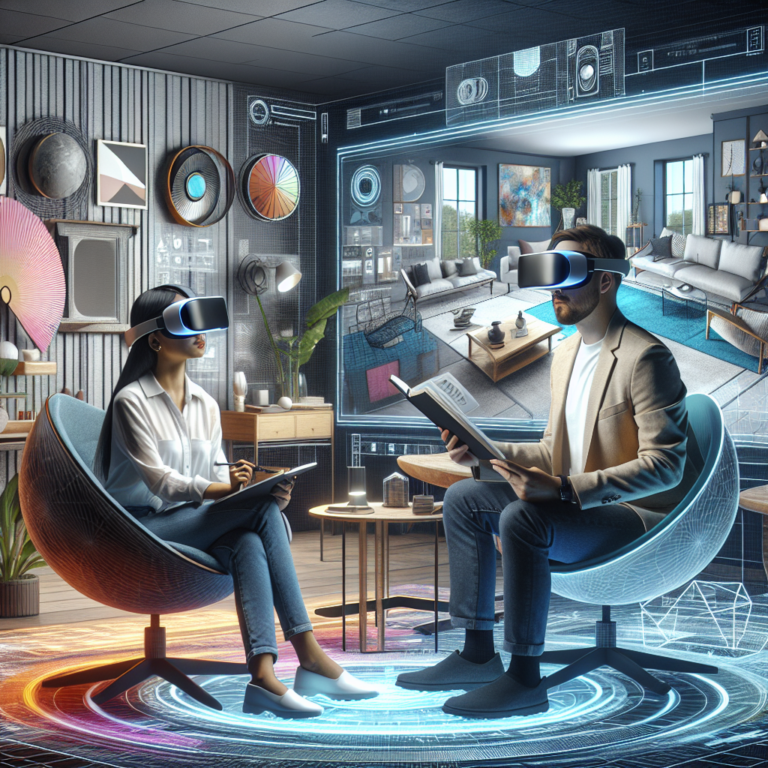Revolutionizing Spaces: The Impact of Immersive Technologies on Interior Design
The Future is Now: Understanding Immersive Technologies
In a world where technology continues to evolve at a rapid pace, immersive technologies are stepping into the spotlight, revolutionizing how we design and experience our living and working spaces. From virtual reality (VR) to augmented reality (AR) and even mixed reality (MR), these technologies are reshaping the field of interior design by offering groundbreaking ways to visualize and engage with designs before they come to life.
What’s Driving the Change? A Digital Revolution
The integration of immersive technologies in interior design stems from several key factors:
- Consumer Demand: Today’s clients are more tech-savvy and expect innovative solutions tailored to their specific needs.
- Enhanced Visualization: Architects and designers can present their ideas in 3D, making it easier for clients to understand complex layouts.
- Efficiency: These technologies streamline workflows, reducing time and resources spent on projects.
- Interactive Engagement: With immersive experiences, clients can engage more deeply in the design process.
How Immersive Technologies Are Changing Interior Design
1. Virtual Reality: Step Inside Your Future Home 🏡
Imagine donning a VR headset and stepping into a fully designed room before a single nail has been hammered. VR technology allows designers to create realistic 3D environments that clients can explore as if they were walking through them in real life. This not only aids in understanding spatial relationships but also helps in making critical design decisions based on immersive experiences.
2. Augmented Reality: Design in Real Time 🎨
Augmented Reality blurs the line between the digital and physical worlds. By using smartphones or AR glasses, clients can see how various design elements, such as furniture or color schemes, would look in their own spaces. This technology provides the opportunity to:
- Visualize Changes Instantly: Clients can adjust designs and see changes in real time.
- Experiment with Color and Texture: Easily swap colors and materials, ensuring optimal choices are made.
- Enhance Collaborative Projects: Designers and clients can make decisions together, fostering creativity and satisfaction.
3. Mixed Reality: Blending Real and Virtual Worlds 🌍
Mixed Reality combines elements of both VR and AR to create an interactive experience that allows users to manipulate digital objects in the real world. Imagine a designer and client sitting together in a room, where they can move and adjust virtual furniture pieces within the physical space using gestures. This technology opens up exciting possibilities for:
- Design Customization: Tailor-made layouts that adapt to the client’s preferences.
- Increased Design Accuracy: Improved understanding of scale and proportions, leading to more precise final designs.
The Benefits of Immersive Technologies in Interior Design
The use of immersive technologies not only enhances creativity but also impacts the overall design process positively:
- Faster Decision-Making: Clients feel empowered as they can visualize and understand their choices more effectively, leading to quicker approvals.
- Cost Efficiency: Reducing the dependency on physical models and prototypes can significantly lower design costs.
- Improved Client Satisfaction: An immersive experience fosters engagement and excitement, ensuring clients are thrilled with the end product.
- Innovative Collaboration: Designers and clients can communicate more efficiently, leading to a more harmonious working relationship.
Challenges Facing the Adoption of Immersive Technologies
While the advantages of immersive technologies are clear, there are challenges that designers and firms must navigate:
- Cost of Technology: High initial investments in hardware and software can be a barrier for small design firms.
- Training Needs: Designers may require training to fully utilize these technologies effectively, which can take time and resources.
- Client Adaptation: Some clients may be hesitant to adopt new technologies, preferring traditional design methods.
Embracing the Future: Best Practices for Interior Designers 🏆
For interior designers looking to embrace immersive technologies, here are some best practices:
- Stay Updated: Keeping abreast of the latest technology trends and tools can give designers a competitive edge.
- Commit to Training: Invest in training workshops for staff to ensure everyone is comfortable with new technologies.
- Start Small: Implementing these technologies gradually allows for assessment and fine-tuning of processes.
- Focus on User Experience: Always prioritize the client’s experience when integrating new technologies.
Inspiring Case Studies of Immersive Design✨
Several companies are leading the charge in merging technology with design:
- Gensler: This global architectural firm uses VR to help their clients visualize urban designs in immersive environments.
- HOK: They have integrated AR into their workflow, helping clients make real-time decisions right on-site.
- Zaha Hadid Architects: Known for their futuristic designs, they employ mixed reality to enhance collaboration with clients.




0 Comments